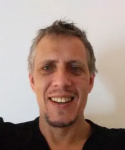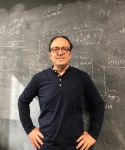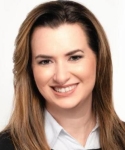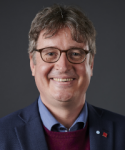ICCS is well known for its lineup of keynote speakers.
This page will be update frequently as names and lecture details become available.
Andrew Adamatzky
University of the West of England Bristol
UK
George Karniadakis
Brown University
USA
PINNs and Deep Neural Operators for Building Digital Twins
Amanda Randles
Duke University
USA
Christian Schroer
DESY | University of Hamburg
Germany

University of the West of England Bristol, UK
WEB
Andrew Adamatzky is Professor in Unconventional Computing in the Department of Computer Science and Director of the Unconventional Computing Laboratory, University of the West of England, Bristol, UK. He does research in reaction-diffusion computing, cellular automata, physarum computing, massive parallel computation, applied mathematics, collective intelligence and robotics, bionics, computational psychology, non-linear science, novel hardware, and future and emergent computation.
TBA

Brown University, USA
WEB 1 | WEB 2
George Karniadakis is from Crete. He is an elected member of the National Academy of Engineering, National Academy of Arts and Sciences, and a Vannevar Bush Faculty Fellow. He received his S.M. and Ph.D. from Massachusetts Institute of Technology (1984/87). He was appointed Lecturer in the Department of Mechanical Engineering at MIT and subsequently he joined the Center for Turbulence Research at Stanford / Nasa Ames. He joined Princeton University as Assistant Professor in the Department of Mechanical and Aerospace Engineering and as Associate Faculty in the Program of Applied and Computational Mathematics. He was a Visiting Professor at Caltech in 1993 in the Aeronautics Department and joined Brown University as Associate Professor of Applied Mathematics in the Center for Fluid Mechanics in 1994. After becoming a full professor in 1996, he continued to be a Visiting Professor and Senior Lecturer of Ocean/Mechanical Engineering at MIT. He is an AAAS Fellow (2018-), Fellow of the Society for Industrial and Applied Mathematics (SIAM, 2010-), Fellow of the American Physical Society (APS, 2004-), Fellow of the American Society of Mechanical Engineers (ASME, 2003-) and Associate Fellow of the American Institute of Aeronautics and Astronautics (AIAA, 2006-). He received the SES G.I. Taylor medal (2014), the SIAM/ACM Prize on Computational Science & Engineering (2021), the Alexander von Humboldt award in 2017, the SIAM Ralf E Kleinman award (2015), the J. Tinsley Oden Medal (2013), and the CFD award (2007) by the US Association in Computational Mechanics. His h-index is 156 (highest in Applied Mathematics) and he has been cited over 148,000 times.
I will review physics-informed neural networks (PINNs) and summarize new extensions for applications in computational engineering. I will also review new representations of interpretable deep neural operators that take as inputs functions and distributions for system identification and real time inference. I will then present how we can reduce energy requirements by neuromorphic computing and spiking neural networks. Pretrained DeepOnets can serve as foundation models for building digital twins, and I will provide some examples in engineering applications.

TBA

DESY | University of Hamburg, Germany
WEB
Christian Schroer is leading the scientific programme of the synchrotron radiation source PETRA III and is a professor for X-ray nanoscience and X-ray optics at the University of Hamburg. His main field of research is X-ray microscopy and X-ray optics that have wide range of applications in physics, chemistry, the life, materials and geosciences, as well as in nanotechnology. Schroer made his doctoral studies in mathematical physics. After a visit as postdoctoral fellow to the University of Maryland, he worked as a research and teaching associate at RWTH Aachen University in the field of X-ray optics and microscopy. Finishing his habilitation in 2004, he joined DESY in Hamburg as a staff scientist. From 2006 to 2014, he was professor for structural physics of condensed matter at Technische Universität Dresden, before he moved back to Hamburg to take on his current position. As leading scientist of PETRA III, he works on the strategic development of the facility. In particular, he led the development of the science case and the conceptual design of PETRA IV, DESY’s planned ultra-low emittance source. As X-ray microscopist, he is working on DESY’s imaging strategy and is cofounder and speaker of Helmholtz Imaging, a platform of the Helmholtz Incubator on Information and Data Science. His scientific group develops X-ray microscopy for synchrotron radiation sources and X-ray free-electron lasers.
TBA
